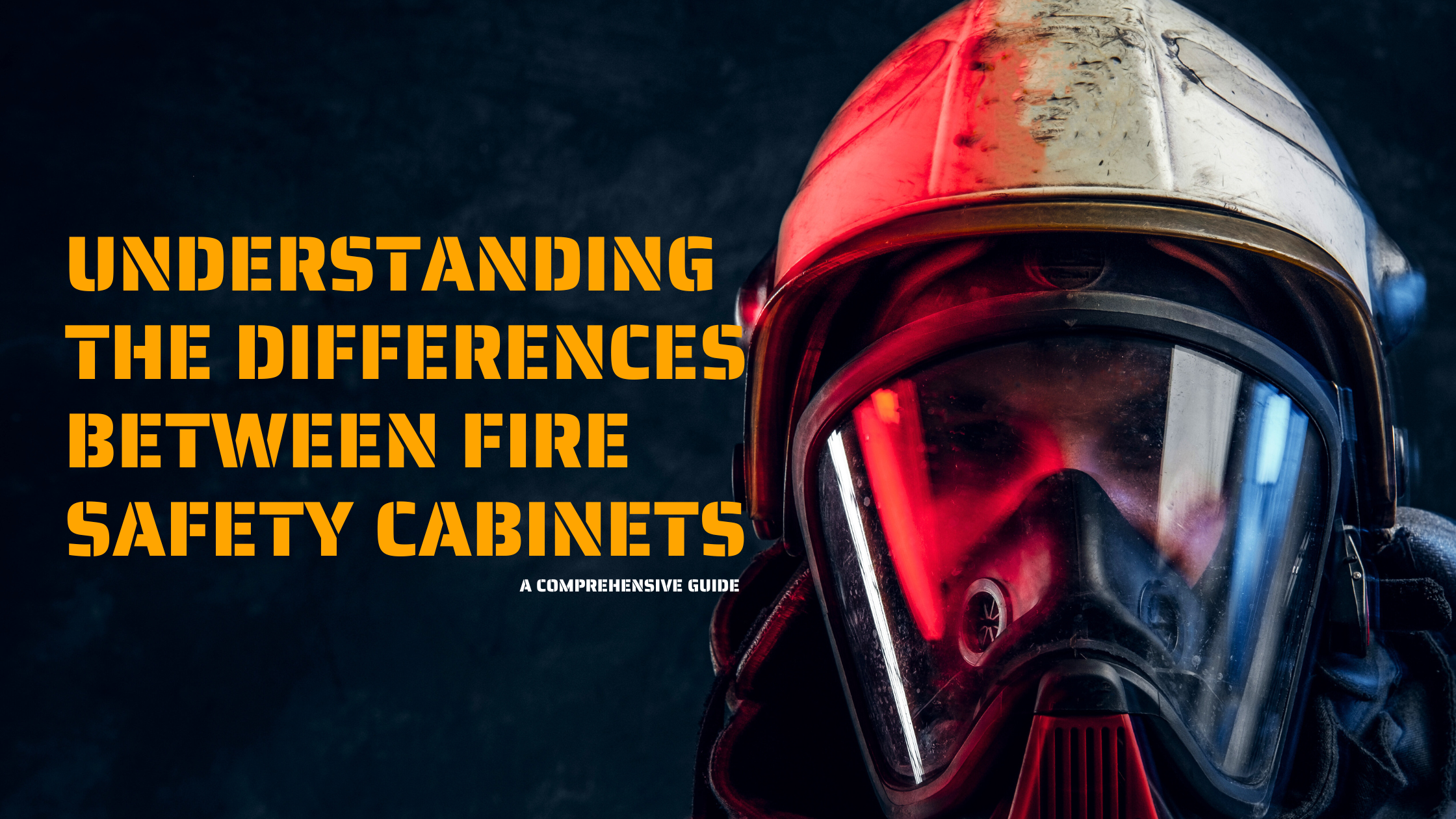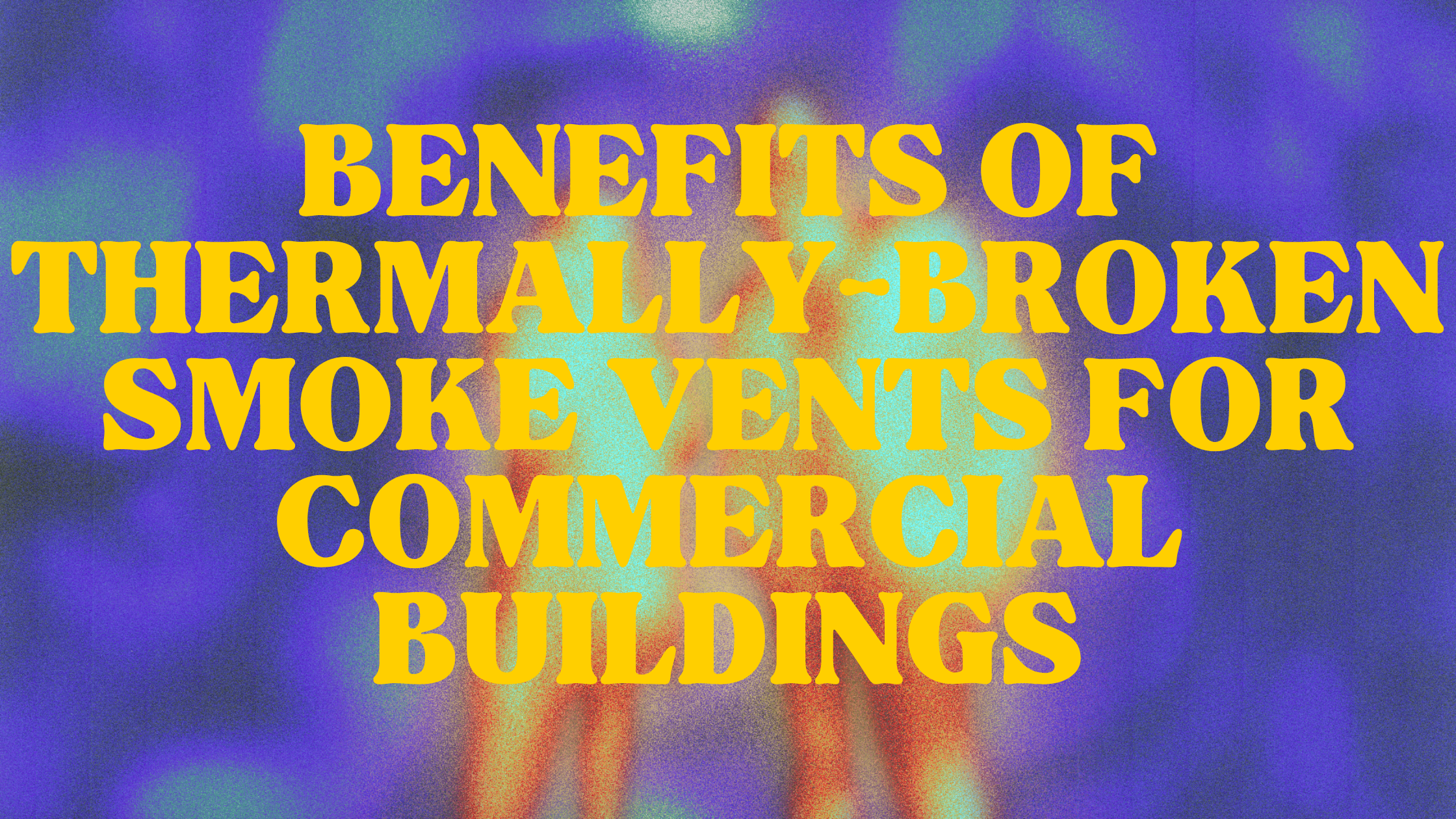
Posts about:
Fire Safety

-1.png)
5 Access Doors for Plumbers

8 Common Mistakes Businesses Make with Fire Extinguishers and Cabinets
...and how to avoid them.
Fire extinguishers and cabinets are essential components of a business's fire safety strategy, designed to provide easy access to firefighting equipment in an emergency. However, many businesses inadvertently make mistakes in their usage and maintenance of fire extinguishers and cabinets, which can compromise their effectiveness. In this blog, we'll explore some common mistakes businesses make with fire extinguishers and cabinets and provide tips on how to avoid them.

Role of Smoke Vents in Evacuation Planning for Commercial Buildings
Emergency Preparedness
In the event of a fire emergency, the safety and well-being of building occupants rely heavily on effective evacuation planning and systems. Smoke vents are integral components of emergency preparedness in commercial buildings, facilitating the safe evacuation of occupants and aiding firefighting efforts. In this blog, we'll explore the crucial role of smoke vents in evacuation planning and their contribution to enhancing overall safety in commercial properties.

The Vital Role of Luminescent Lighting in Fire Safety
When disaster strikes, such as during a fire, the environment can quickly become chaotic and disorienting. Thick smoke, power failures, and the stress of an emergency situation can make it difficult for occupants to find their way to safety. This is where luminescent lighting plays a crucial role in fire safety, guiding people to exits and ensuring that evacuation routes are clearly visible.

Fire Cabinets: A Critical Component of Your Business's Emergency Preparedness Plan
Safeguarding Your Business
When it comes to safeguarding your business from potential fire hazards, a comprehensive emergency preparedness plan is essential. Among the various safety measures, fire cabinets play a pivotal role in ensuring that your business is equipped to handle emergencies efficiently. In this blog, we’ll explore how fire cabinets fit into a broader strategy for emergency preparedness and response.

Benefits of Commercial Daylighting Smoke Vents
When it comes to enhancing safety and sustainability in commercial buildings, smoke vents are essential. They provide a means to control and vent smoke during a fire, improving evacuation safety and aiding firefighting efforts. However, not all smoke vents are created equal. While traditional smoke vents serve their purpose effectively, commercial daylighting smoke vents offer additional benefits that can significantly enhance the functionality and value of a building. In this blog, we explore the advantages of commercial daylighting smoke vents over regular smoke vents.

Understanding Photoluminescent Pigments
A Guide to Glow-in-the-Dark Technology
Photoluminescent pigments are materials that absorb energy from light and then re-emit that energy as visible light, creating a glow-in-the-dark effect. These pigments are commonly used in safety applications, such as emergency signs, and can be mixed with various materials like paint, plastic, ceramics, glass, and fibers. The pigments are not radioactive or toxic, making them a safe and sustainable choice for a wide range of applications.
How Photoluminescent Pigments Work
Photoluminescent pigments contain inorganic chemical compounds, typically composed of aggregated crystal elements. When exposed to light, these compounds absorb energy and then release it over time as a glowing effect. The pigments can absorb a wide spectrum of visible light and re-emit it, allowing them to "charge" under different lighting conditions and glow in the dark without the need for electrical power.
A Brief History of Photoluminescent Pigments
Photoluminescent technology has evolved over the decades. In the 1970s, phosphorous pigments were used to create safety markings, but they had limited absorption capacity and required electric power to boost their glow. In the 1980s, stronger pigments made of zinc sulfide crystals were developed. However, the real breakthrough came in the 1990s with the introduction of strontium aluminate powder, which could fully charge in about 20 minutes and provide light for more than 10 hours. These advancements have made photoluminescent pigments more efficient and effective in various applications.
Key Terms and Definitions in Photoluminescence
To understand how photoluminescent pigments perform, it's helpful to know a few key terms related to light and brightness:
- Lumens: This measures the total quantity of visible light emitted by a source in all directions. A 60-watt incandescent bulb, for example, emits between 500 and 700 lumens.
- Candle Illumination / Foot-Candles: This measures the brightness of light one foot away from the source. A typical living room might need 10-20 foot-candles of brightness.
- Candela: This refers to the amount of light emitted by a lighting device in a specific direction. A common candle emits about one candela of light.
- Millicandela (mcd): This measures the amount of light striking a single surface from a given angle. It's a common measurement for high-brightness LEDs.
Lumens are typically measured using an integrating sphere, which calculates the total light output in all directions. Millicandela, however, is highly dependent on the angle at which the light is emitted, which is why high-brightness LEDs designed for illumination are typically measured in lumens, while indication LEDs are measured in millicandela.
Top Lighting Options for Photoluminescent Materials
The type of light used to charge photoluminescent pigments affects their performance. Fluorescent, LED, and halogen lights are more effective than incandescent bulbs because they produce more light and less heat. Sunlight can also be used, but it may cause signs and labels to fade over time.
Proximity to the light source also plays a role in how effectively photoluminescent materials charge. The closer the material is to the light source, the more light it absorbs, resulting in a brighter glow. As few as 5 foot-candles of light (equivalent to a 15-watt bulb) can be used to charge photoluminescent labels and signs.
Photoluminescent Safety Standards
The National Fire Protection Association (NFPA) requires that photoluminescent exit enclosures be continuously illuminated for at least 60 minutes before a building is occupied. This ensures that the markings have time to fully charge and provide adequate illumination during emergencies.
Under typical stairwell lighting, photoluminescent signs and labels can take 30 to 60 minutes to fully recharge and then emit a steady glow for about eight hours. This provides a reliable source of illumination during power outages or emergencies, enhancing safety and compliance with building codes.
Photoluminescent pigments offer a versatile and energy-efficient solution for glow-in-the-dark applications. Their ability to gather energy from light and re-emit it without the need for electricity makes them a valuable resource in safety and other industries. Understanding how they work and the factors that affect their performance can help you make informed decisions about using them in your projects.
Photoluminescent egress path marking systems are an important life safety requirement in current building codes. These systems allow for the safe and quick evacuation of buildings in the case of an emergency. They provide a routing system that is not dependent on electrical power that can easily be followed in dark and smoke-filled exit pathways. Nystrom offers a full line of photoluminescent products. For more information, please visit our website or contact our Sales & Customer Support team.

Understanding the Differences Between Fire Safety Cabinets
When it comes to fire safety, fire extinguishers are indispensable and having them readily accessible can make all the difference in an emergency. However, to keep these essential safety devices secure and unobtrusive, fire extinguisher cabinets are used and can deter tampering and provide protection from the elements or corrosive conditions. Understanding the differences between these cabinets can help you choose the right one for your needs, balancing functionality, durability, and aesthetics.

Benefits of Thermally-Broken Smoke Vents for Commercial Buildings
Enhancing Fire Safety and Energy Efficiency
In the realm of commercial building design, the integration of fire safety measures is paramount to protect occupants and property in the event of emergencies. One critical component of fire safety systems is smoke vents, which facilitate the safe evacuation of occupants and aid firefighting efforts. In recent years, thermally broken smoke vent products have emerged as innovative solutions that not only enhance fire safety but also contribute to energy efficiency and building performance. In this blog, we'll explore the benefits of thermally broken smoke vent products and their significance in commercial building design.

